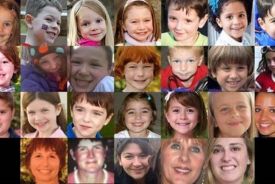New research contributes to a concerning trend in the U.S.' honeybee population, as the Department of Agriculture (USDA) determined 42 percent of the nation's colonies died off in the past year.
According to the Wall Street Journal, the new report covers a 12-month period that concluded in April. The findings suggest honeybees are not just dying off when winter hits, but even in warm months.
Past studies have also linked honeybee colony die-offs to federally approved, widely used pesticides.
"We traditionally thought of winter losses as a more important indicator of health, because surviving the cold winter months is a crucial test for any bee colony," Dennis vanEngelsdorp, an assistant professor of entomology at the University of Maryland and project director for the Bee Informed Partnership, said in a press release. "But we now know that summer loss rates are significant too. This is especially so for commercial beekeepers, who are now losing more colonies in the summertime compared to the winter. Years ago, this was unheard of."
Bee Informed, a collaboration of the USDA and Apiary Inspectors of America (AIA), released their preliminary report Wednesday. For their study, the researchers surveyed more than 6,000 U.S. beekeepers and the results suggest this past winter was harsher on their colonies than past winters. Non-winter colony die-off were also on the rise.
"The winter loss numbers are more hopeful especially combined with the fact that we have not seen much sign of Colony Collapse Disorder (CCD) for several years, but such high colony losses in the summer and year-round remain very troubling," survey co-coordinator Jeffery Pettis, a senior entomologist at the UUSDA, said in the release. "If beekeepers are going to meet the growing demand for pollination services, researchers need to find better answers to the host of stresses that lead to both winter and summer colony losses."
© 2025 University Herald, All rights reserved. Do not reproduce without permission.








